Coming to Ha Giang this season, visitors will see the valleys covered in the brilliant pink color of buckwheat flowers.
Buckwheat or rye is grown in many provinces in the northern highlands of Vietnam. However, in Ha Giang province, this flower is a specialty of the land at the head of the Fatherland, becoming a source of inspiration for us on our journey here.
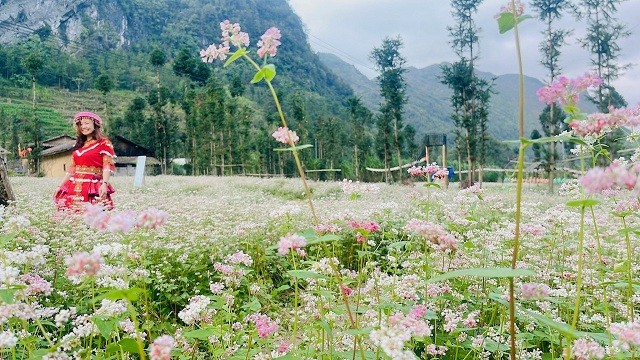 |
| Tourists check in with buckwheat flowers in Ha Giang. (Photo: Ha Anh) |
We are lucky if we have the opportunity to come to Ha Giang in November - the time when buckwheat flowers bloom the most in the mountainous areas of Ha Giang.
Passing through places like Ma Le, Pho Cao, Sung La, Lung Cu flagpole… one can see the pure colors of flowers on hillsides, roads, at the foot of mountains, on passes and even thorny cliffs.
There are many beautiful buckwheat flower gardens in Ha Giang, but our favorite place is still Lung Cam Cultural Tourism Village, in Sung La commune, located in the valley of Dong Van stone plateau.
The village is home to about 70 households, mainly Mong, Lo Lo and Hoa ethnic groups, and is well known for being the setting for the feature film “Pao’s Story”.
Here, in addition to seeing with your own eyes the flowers covering the vast hill, visitors can also visit ancient houses with traditional architecture and see the daily activities of the Mong people.
Among them, "Pao's house" was built in 1947, is a common rammed earth house in the rocky plateau, closed on all four sides, with a sky courtyard in the middle. The front yard is also paved with stone, surrounded by plum, apricot, peach trees... flowers typical of the rocky plateau.
Another ideal place to see buckwheat flowers is Pho Bang town, Dong Van district. This place is full of the mystery of the yin-yang house with the typical mark of the Chinese and is famous for its rose gardens stretching with the simple and wild beauty of the Northwest mountains and forests.
Coming to Ha Giang, we also learned about the origin of this flower with strong vitality. According to the legend, the Rice Fairy and the Corn Fairy went to sow seeds in the lower world, the rice and corn seeds did not know what to do with them so they poured them into the mountain ravine.
When the corn and rice plants grew and produced seeds, people took the seeds as food to survive. One year, the rice and corn in people's houses ran out before the new crop could start, so many people had to look for a new source of food.
After a long time searching, they discovered a strange scent in the ravine, which was the scent of a shy purple flower hidden under the lush green triangular leaves.
They took the seeds of this flower as food and ate them as delicious as corn. From there, the name buckwheat was born with the meaning of the plant growing from rice and corn stalks and having triangular leaves.
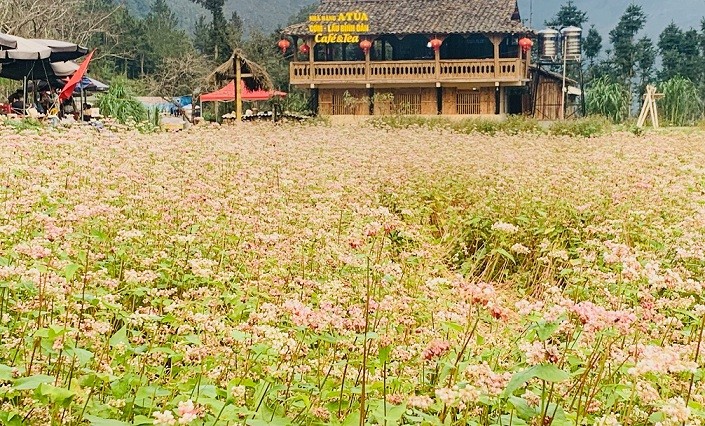 |
| Buckwheat flower fields in Lung Cam Cultural Tourism Village. (Photo: Ha Anh) |
Not only giving Ha Giang the beauty of shimmering flower fields, buckwheat is also used for many other useful purposes.
Before blooming beautiful flowers, young buckwheat plants are often picked by people and used as a vegetable food. Buckwheat has a slightly bitter taste, but after eating, it is sweet and fragrant.
If boiled, the stems and leaves of buckwheat will become a medicine to treat digestive diseases such as diarrhea, bloating, inflammation, stomach pain, constipation, lower blood pressure, blood fat and blood sugar.
Ha Giang is also famous for buckwheat cake. The cake looks like a large rice cake of the lowlands but has the characteristic brown color of buckwheat seeds. When eaten, the cake has a rich, sweet taste, is chewy and fatty, and has a very special aroma.
In addition to making cakes, buckwheat seeds are also ground to make porridge. On cold winter days, a bowl of hot and delicious buckwheat porridge will warm your stomach.
Another unique way to prepare buckwheat is to roast the buckwheat seeds on a hot stove and enjoy them, just like you would roast soybeans; or grind the seeds, mix them with yogurt or unsweetened fresh milk into a mixture that helps brighten and smooth the skin.
Speaking of highland cuisine , buckwheat wine is also a precious and extremely delicious wine. Not made entirely from buckwheat seeds, the wine is mixed with corn in a 1:2 ratio, then people will take these two types of seeds to incubate with a special yeast and then cook to produce this delicious buckwheat wine.
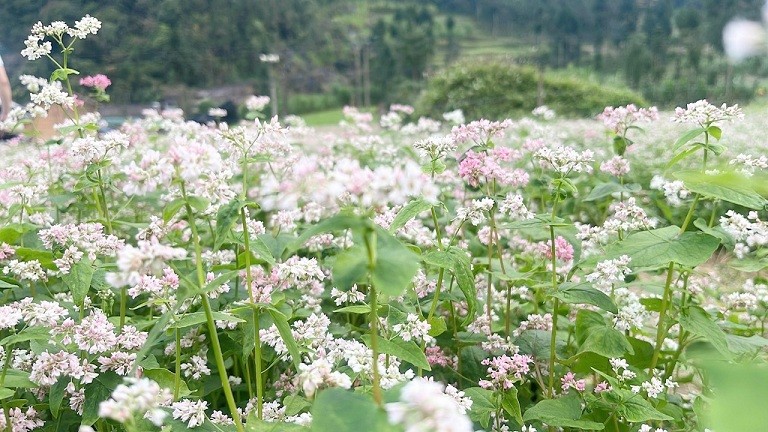 |
| Buckwheat also has many other useful uses. (Photo: Ha Anh) |
Buckwheat wine is very smooth to drink, not as spicy as rice wine, not as sweet and smooth as rice wine, but it is a blend of flavors between the two. This is also the drink we chose to enjoy when visiting Dong Van ancient town at night.
Buckwheat is a plant belonging to the legume family (Fabaceae), the petals are clustered together in a pyramid shape, in the middle is the buckwheat seed. The color of buckwheat flowers changes with each stage. When they first bloom, they are pure white, then turn light pink, purple-pink, then dark red and finally turn black when they wither. |
Source



![[Photo] General Secretary attends the inauguration ceremony of the Ministry of Public Security Headquarters](https://vphoto.vietnam.vn/thumb/1200x675/vietnam/resource/IMAGE/2025/8/16/3ceec3a24ef945c18ae2b523563b749d)





![[Photo series] Admire the skylight glass roof gradually taking shape at the 35 trillion VND terminal of Long Thanh Airport](https://vphoto.vietnam.vn/thumb/1200x675/vietnam/resource/IMAGE/2025/8/16/851fc79edc1e4b1ab9e51763f85ede9a)
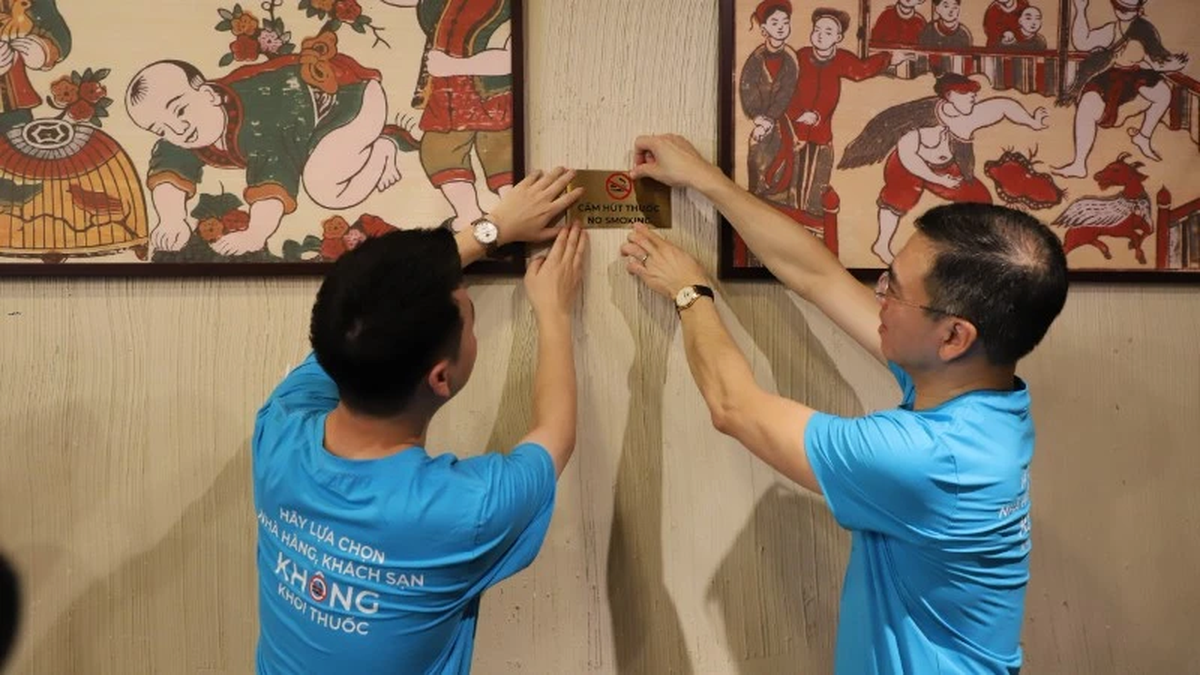












![[Photo] “Moving forward with Vietnam” on the most romantic road in Vietnam](https://vphoto.vietnam.vn/thumb/1200x675/vietnam/resource/IMAGE/2025/8/16/0ee500bc59fd4468863261ee26f47fe7)
![[Photo] Prime Minister Pham Minh Chinh talks on the phone with Cambodian Prime Minister Hun Manet](https://vphoto.vietnam.vn/thumb/1200x675/vietnam/resource/IMAGE/2025/8/15/72d3838db8154bafabdadc0a5165677f)


![[Photo] National Assembly Chairman Tran Thanh Man attends the inauguration ceremony of President Ton Duc Thang Memorial House](https://vphoto.vietnam.vn/thumb/1200x675/vietnam/resource/IMAGE/2025/8/16/23555950872d428a8708a1e2f94cbf59)
![[Photo] Prime Minister Pham Minh Chinh attends a special art program called "Hanoi - From the historic autumn of 1945"](https://vphoto.vietnam.vn/thumb/1200x675/vietnam/resource/IMAGE/2025/8/15/c1c42655275c40d1be461fee0fd132f3)
![[Photo] Red and yellow stars at the launching ceremony of the program "Moving Forward with Vietnam"](https://vphoto.vietnam.vn/thumb/1200x675/vietnam/resource/IMAGE/2025/8/16/076df6ed0eb345cfa3d1cd1d7591a66f)



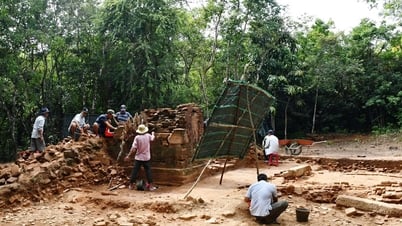





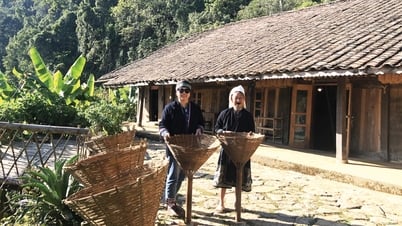






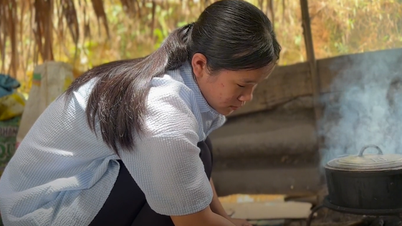





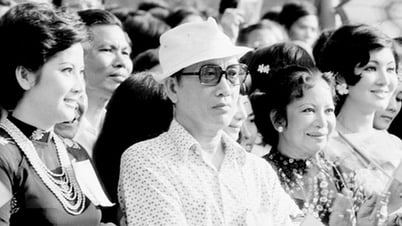








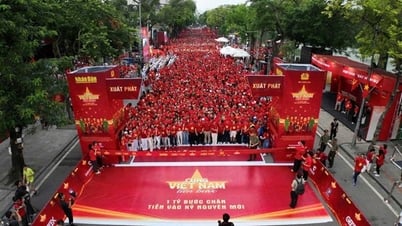





































Comment (0)